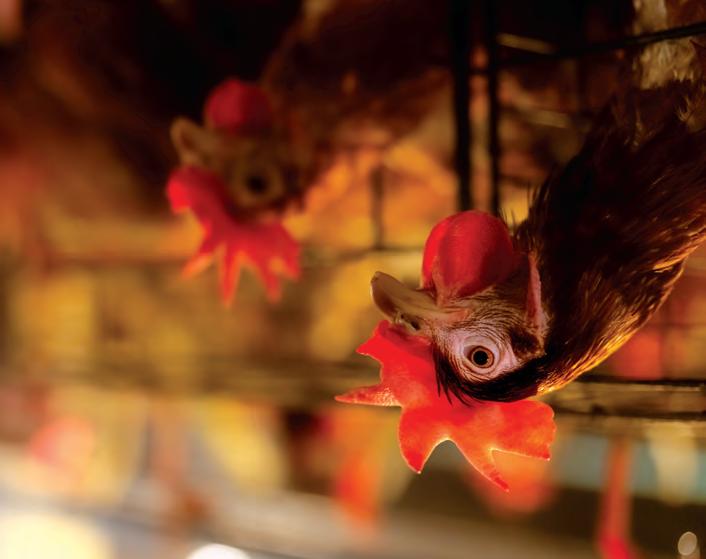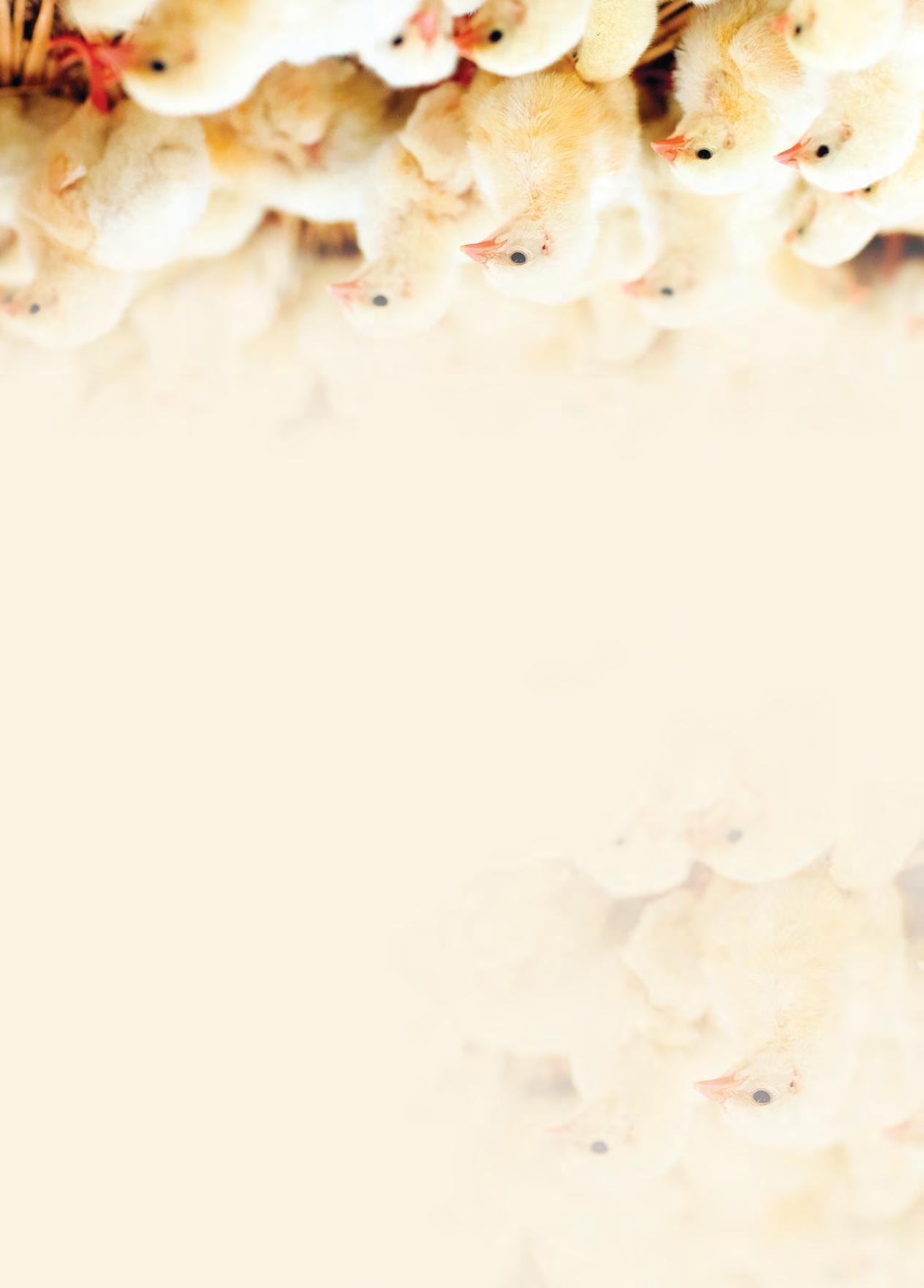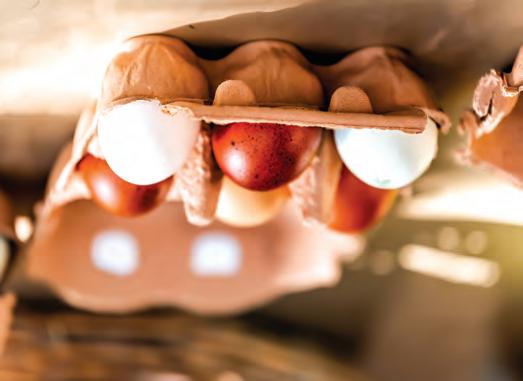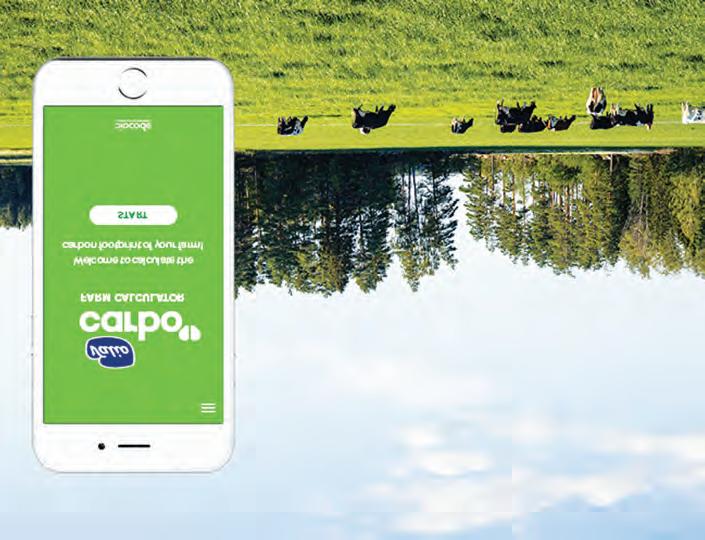
5 minute read
Poultry
Termotecnica Pericoli names Poulex International as best poultry dealer in Egypt
ITALY-BASED TERMOTECNICA PERICOLI has named Poulex International company as the best poultry dealer of 2019 in the Egyptian poultry industry.
Assem Halim, president of Poulex International, received the symbolic prize during his recent visit to Termotecnica Pericoli factories in Italy.
Poulex International has been conferred the prize for results recorded in 2019 and for the numerous projects carried out in Egypt’s poultry sector.
Established in 1967, Termotecnica Pericoli provides ‘Made in Italy’ solutions for specialised in agricultural and livestock environment worldwide. The company manufactures heating, cooling and ventilation equipment , distributed across global markets through an extensive network of agents specialised in agricultural and livestock environment.
Poulex has been one of the leading companies in Egypt and the Middle East in the supply of turnkey projects for poultry and livestock, providing the latest technologies and concepts.
The poultry houses and livestock sheds manufactured by them adhere to the highest
Poulex has been conferred the prize for results declared in 2019.
productive standards, by ensuring the best environment to the animals, in any climatic condition.
Poulex International has been projecting and manufacturing pre- fabricated poultry sheds of any size and typology for the last 15 years.

The availability of high-quality feed is critical for producers to remain competitive and emphasise on sustainability.
Innovative feed for poultry
CURRENT LIVESTOCK FARMING practices contribute to serious global challenges, including climate change, land degradation, and pollution. Therefore, more sustainable methods are urgently required to meet the increasing demand for meat, fish, milk and eggs.
With the livestock industry under increasing scrutiny for its environmental and social impacts, changing the composition of conventional animal feed can help farmers to trigger production, thus creating significant environmental benefits.
The nutrition or feed requirement of poultry birds depends on various factors such as age, weight, rate of egg production, growth rate and climatic condition.
According to the UN Food and Agriculture Organisation (FAO), feed is the most important input for poultry production in terms of cost. The availability of high quality and low-cost poultry feed is critical for producers to remain competitive and to meet increasing animal protein demand.
Impact of innovative animal feed Evonik partnered with finance and sustainability professionals at KPMG member firms to measure and evaluate the impacts of using sustainable animal feed practices on alarge scale.
The analysis, using the KPMG True Value methodology, compared the societal impacts of using innovative animal feed versus conventional feed. It covered the economic, environmental and social impacts of meat production across the value chain, from the cultivation of crops for animal feed through to animal husbandry.
The Evonik/KPMG True Value approach assigns a financial value for each impact. Once this was established for each impact, the total value of impacts (referred to in the analysis as ‘societal value’) could be calculated for production using innovative animal feed and conventional feed. The two calculations revealed significant differences between the two types of feed in terms of their social and environmental impacts.

The analysis valued the environmental and social impacts of poultry production in Brazil at US$1483.29 per tonne of live weight (t/lw) when conventional animal feed is used. The most significant impacts are land use to produce crops for animal feed and air pollution from the chickens’ waste. However, when innovative animal feed is used, the negative environmental and social impacts of chicken production are reduced by one third. The biggest reductions are in land use and its effect on biodiversity, air pollution and the potential for soil acidification and pollution of waterways.
“The results of this analysis could change perceptions within the livestock production industry. They could trigger meaningful dialogue across the value chain and help to shift farming towards more sustainable practices”, said Dr. Emmanuel Auer, Head of Animal Nutrition, Evonik.
Conventional animal feed is high in protein, which leads to high levels of nitrogen in animal waste. Evonik has developed amino acids for animal feed that help to reduce animals’ protein intake. This, in turn, decreases the level of nitrogen excreted. The innovative animal feed also improves the efficiency of the animals’ digestion, reducing the amount of food and water consumed and the amount of waste produced.
“We see this analysis as a tool to guide decision-making in innovation and product portfolio management to develop new products and services with a positive effect on society,” said Dr. Auer.
In conclusion For optimal growth and good health, poultry business needs to pay attention to balanced nutrients.
Water plays a major role in the diet. Maintaining a constant supply and good quality of water is of great significance.
Feed additives are gaining importance in providing optimal well-being and comfort in poultry business. h
Innovative feed improves the efficiency of the animal’s digestion.
Optimising flock efficiency with artificial intelligence
THE MONITORING AND efficient handling of different shell qualities can have a surprisingly positive result for the business. To detect the shell strength of every individual egg, the Netherlands-based Moba had, almost a year ago, launched an innovation based on acoustic analysis enabling customers to:
Monitor flocks based on average shell quality and uniformity within a supply of eggs
Grade eggs based on shell quality. This means that from a flock of relatively low quality, the stronger shells (which still often represent 80–90 per cent of the eggs) go to retail products, while the worst is downgraded to an industrial product.
Harnessing digital technologies help improve efficiencies.
After testing this function at various test sites, it is set to become a standard feature of Moba’s crack detection function.
Moba has announced a futuristic development programme to incorporate AI into a vision system for detecting cracks.
Paul de Schouwer, commercial director of Moba, explained, “Where most market segments focus on optimising profits and squeezing the highest possible yield out of the logistical balancing act between supplies and products, other market segments are dealing with unheard hygienic challenges, to such an extent that simplicity prevails over the yield of the operation.”
“In such a situation, the new technology using AI will certainly help with simplifying things,” de Schouwer added.
In a lot of ways, artificial intelligence and machine learning are integrating into agriculture and livestock production.
Harnessing theses technologies offer several ways to respond to the growing demands on poultry production and to improve the efficiencies. They have an impact on maintaining poultry health, disease management as well as ensuring food safety.
Apart from farmers or processors, technologies such as those involving artificial intelligence, provide greater transparency to customers. h Image Credit:Kristina/ Adobe Stock







